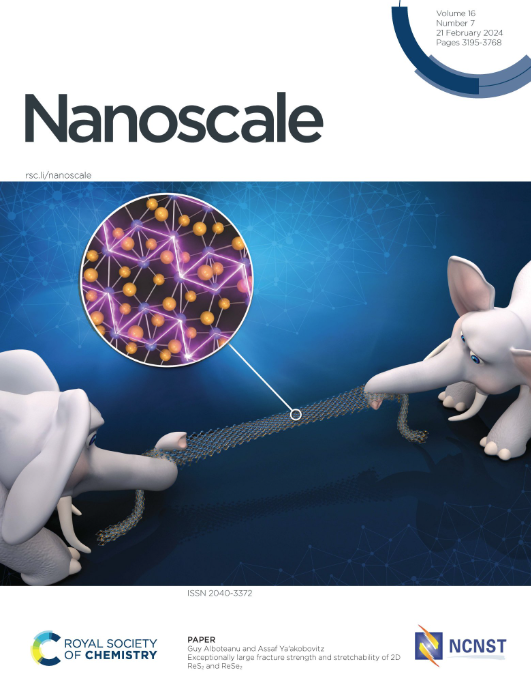CeO₂ and Mn₃O₄-based nanozymes exhibit scavenging of singlet oxygen species and hydroxyl radicals
IF 5.8
3区 材料科学
Q1 CHEMISTRY, MULTIDISCIPLINARY
引用次数: 0
Abstract
Singlet oxygen and hydroxyl radicals are highly reactive species that contribute significantly to the oxidative stress-related pathologies. Herein, we report the effective scavenging of 1O2 and •OH by CeO₂ and Mn₃O₄-based nanozymes and compare with the well-known scavengers of these radicals. The IC50 values of scavenging of •OH by nanozymes was compared with NAC, which was in the order of Mn3O4 [2.3 µM] < CeO2 [5.4 µM] < NAC [28.4 µM]. Similarly, the IC50 values for 1O2 scavenging was observed as Mn3O4 [4.75 µM] < Sodium Azide [60.5 µM] < CeO2 [857.27 µM]. The cell viability assays, ROS generation studies and cell cycle analysis revealed that these nanozymes (1µg/mL) are biocompatible to the mammalian cells.基于ceo2和Mn₃O₄的纳米酶具有清除单线态氧和羟基自由基的能力
单线态氧和羟基自由基是高度活跃的物种,在氧化应激相关的病理中起着重要的作用。本文报道了基于ceo2和Mn₃O₄的纳米酶对1O2和•OH自由基的清除作用,并与已知的清除剂进行了比较。与NAC相比,纳米酶清除•OH的IC50值依次为Mn3O4[2.3µM] <;CeO2[5.4µM] <;Nac[28.4µm]。同样,清除o2的IC50值为Mn3O4[4.75µM] <;叠氮化钠[60.5µM] <;CeO2[857.27µM]。细胞活力测定、ROS生成研究和细胞周期分析表明,这些纳米酶(1µg/mL)与哺乳动物细胞具有生物相容性。
本文章由计算机程序翻译,如有差异,请以英文原文为准。
求助全文
约1分钟内获得全文
求助全文
来源期刊

Nanoscale
CHEMISTRY, MULTIDISCIPLINARY-NANOSCIENCE & NANOTECHNOLOGY
CiteScore
12.10
自引率
3.00%
发文量
1628
审稿时长
1.6 months
期刊介绍:
Nanoscale is a high-impact international journal, publishing high-quality research across nanoscience and nanotechnology. Nanoscale publishes a full mix of research articles on experimental and theoretical work, including reviews, communications, and full papers.Highly interdisciplinary, this journal appeals to scientists, researchers and professionals interested in nanoscience and nanotechnology, quantum materials and quantum technology, including the areas of physics, chemistry, biology, medicine, materials, energy/environment, information technology, detection science, healthcare and drug discovery, and electronics.
 求助内容:
求助内容: 应助结果提醒方式:
应助结果提醒方式:


